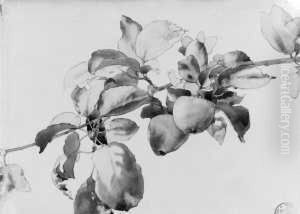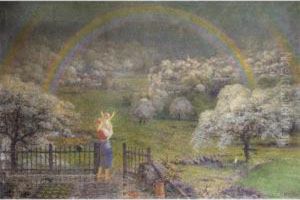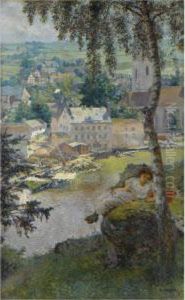Vitezlav Karl Masek Paintings
Vitezlav Karl Masek, an artist whose name might not resonate widely in the global art canon, was a Czech painter and illustrator, born in 1865 in the Austro-Hungarian Empire, in what is now the Czech Republic. His life spanned a period of significant political and social change in Europe, which influenced the art scene profoundly. Masek’s contributions, though perhaps not as celebrated as those of his contemporaries, offer a unique window into the Czech art world of the late 19th and early 20th centuries.
Masek's artistic journey began in Prague, where he was deeply influenced by the nationalist movements that swept through Central Europe during his formative years. These movements sought to assert the cultural and political independence of nations under the Austro-Hungarian Empire, and they left a lasting impression on Masek’s work. He was known for his paintings that often depicted scenes from Czech folklore and history, imbuing his works with a sense of national pride and identity.
Educated at the Academy of Fine Arts in Prague, Masek honed his skills under the tutelage of renowned artists of the time. He was particularly drawn to the techniques of realism and later, to some extent, incorporated elements of Art Nouveau. His style evolved over the years, reflecting the broader shifts in European art movements. Masek was not only a painter but also an accomplished illustrator, contributing to various Czech publications and books. His illustrations often carried the same themes of Czech history and folklore that permeated his paintings.
Throughout his career, Vitezlav Karl Masek participated in numerous exhibitions, both in the Czech lands and abroad, gaining recognition for his contribution to Czech art. However, his work was somewhat overshadowed by the more dominant figures in European art history, and only recently has there been a renewed interest in Masek and his oeuvre. This renewed interest has brought to light the significant role he played in the development of Czech national art during a pivotal time in the country's history.
Masek continued to create art until his death in 1927. Today, his works can be found in various Czech museums and galleries, serving as a testament to his dedication to depicting the Czech spirit. While he may not have achieved the international fame of some of his contemporaries, Vitezlav Karl Masek’s legacy lives on through his contributions to the Czech art scene and his portrayal of the cultural heritage of his homeland.


